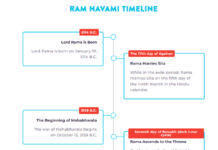Vidya Sethuraman
India Post News Service
Redistricting is the redrawing of the boundaries of congressional and state legislative districts. It happens every 10 years, after the census, to reflect the changes in population. The census dictates how many seats in Congress each state will get, which is why some states gain or lose seats in the House of Representatives every 10 years. Each state has its own redistricting process.
Eleven states leave the mapmaking to an outside panel. But most 39 states have state lawmakers draw the new maps for Congress. The 2020 census was a historic population count of the United States. Virtually all of the population growth in our country between 2010 and 2020 was due to growth in communities of color.
The process is complete in 20 states. Midway through the redistricting process, partisan map makers are drawing maps aimed at undercutting the potential influence of communities of color, even as state legislatures pass new voter restriction laws. This is particularly dramatic in the South, even as new multiracial coalitions are emerging to push for more equitable representation. Speakers discussed the latest trends and community efforts to counter them at the EMS briefing on December 3.
Voting rights advocates as far north as Wisconsin, and in Southern states like Georgia, Texas and Florida, are sounding the alarm: Without immediate federal action to restore the VRA, redistricting could have devastating impacts on people who simply want their voices heard. Congress must pass the John R. Lewis Voting Rights Advancement Act to strengthen the VRA and restore its core protections, and also pass the Freedom to Vote Act as soon as possible.
Eight in ten of the new voters this decade are people of color, said Michael Li, Senior Counsel, Brennan Center’s Democracy Program. Unsurprisingly, communities of color are emerging as principal targets in this decade’s redistricting. But some of this decade’s maps are especially brazen in their treatment of communities of color. Ligitations have kicked off and they have to be solved soon as primaries are months away in a few states. Li said, maps need to be litigated quickly for the 2022 election. He said there really isn’t time to win challenges ahead for the 2022 elections. The process of redistricting is a political one. He pointed out more Latinos, Asians and Black population increase in Texas.
Li said that with one party controlling everything in many southern states, it is a recipe for discrimination. He clarified that it doesn’t matter if they are Democratic or Republican majorities.
Alabama Forward, led by Executive Director, Evan Milligan, is a statewide civic engagement membership organization focused on advancing democracy in Alabama. Alabama Forward has been offering training on maptitude (https://www.caliper.com/maptovu.htm) and other tools “that most of our legislatures are using” on how to place data into visual maps to propose fair districts. Milligan shared information regarding the collective strategy used to mobilize Alabamians during the redistricting process. “This is not just about the mechanics of civic institutions,” he said. “This is about our survival, the survival of our values and demographic traditions and redistricting is one component of that.”
Kyle Brazile, Director of Civic Engagement, NC Counts Coalition said that keeping communities whole is important. He said that public participation is important and in North Carolina the bulk of the access and openness has come from grassroots organizations rather than the government. He said that the Latinx and Asian populations are growing exponentially.







